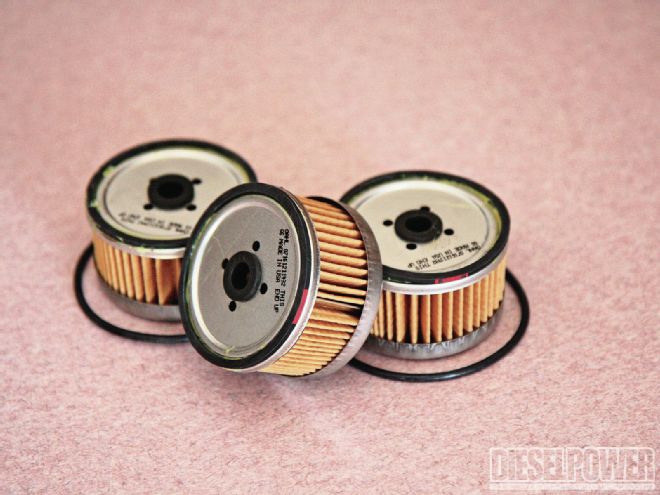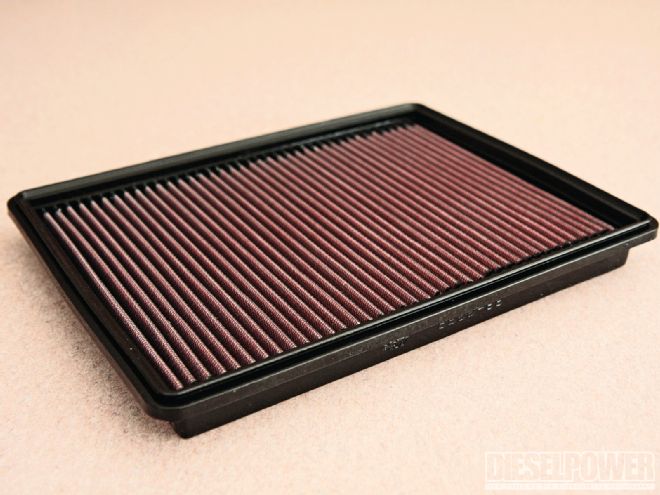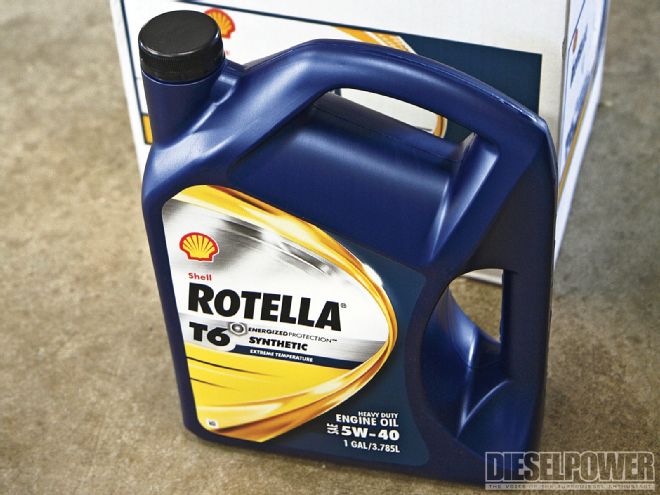When getting to know each diesel engine in the truck market, it’s important to know its lifeblood: how it gets its fuel. Because the injection pump is at the heart of everything in a diesel powerplant, this month we’re highlighting each popular mill’s injection pump and style, as well as what make and model year truck you’ll find them on. Mechanical or electronic, HEUI or common-rail, we’ve got you covered.

| injection System Basics ford 6 4l Power Stroke
Stanadyne DB2 Found On: ’82 to ’93 Chevy and GMC C/K Series and GMT 400, ’83 to ’94 Ford F-250 and F-350
The Stanadyne DB2 injection pump can be found on both of GM and Ford’s early IDI (indirect injection) diesels. It was used on GM’s 6.2L V-8 (and 6.5L in ’92 and ’93), and Ford’s 6.9L and 7.3L V-8. These mechanical pumps use a rotary fuel-metering valve to control both fuel delivery into the combustion chamber, and engine speed. We assume GM and Ford chose them for their simplicity, serviceability, packaging ability on V-8 engines, and, of course, their ability to meet emissions standards. As Ford introduced the direct-injection 7.3L Power Stroke in ’94 (and implemented HEUI injection), GM upgraded to the electronically controlled DS4 pump (also from Stanadyne) on its 6.5L IDI engines.

| injection System Basics stanadyne Db2 Injection Pump
Bosch VE
Found On: ’89 to ’93 Dodge D and W250 and W350
Fitted to the first 5.9L Cummins offered in Dodge trucks was the Bosch VE. A mechanically controlled, axial-piston pump, it uses a vane-style supply to create its internal pressure, which increases with engine speed. A single distribution plunger generates injection pressure and controls injection timing. Its dynamic timing increases when rpm goes up. The benefit of the VE pump is that it only requires 3 to 5 hp to turn it (vs. 10 to 12 hp on newer pumps). It also has a maximum injection pressure range of 17,400 psi in stock form, as opposed to the DB2 GM and Ford were using, which maxed out at 6,700 psi.

| injection System Basics bosch Ve Pump
Bosch P7100 Found On: ’94 to ’98 Dodge Ram 2500 and 3500
If you’ve spent much time around farm equipment, rotary and inline injection pumps will look familiar to you. But you’re probably also aware that inline pumps take the cake in the performance department. The Bosch P7100 here, and as found on ’94 to ’98 Dodge Rams, represents the best in mechanical diesel performance. The pump has six individual plunger-and-barrel assemblies, driven off the pump’s camshaft. Cam lobes force the plungers up and down within their barrels. The plungers provide the injection pressure, while the camshaft is in charge of the firing order. Plungers, barrels, delivery valves, and the camshaft can all be modified to deliver up to 900 cc of fuel per 1,000 strokes (which is enough fuel to support up to 1,800 hp).

| injection System Basics bosch P7100 Pump
Bosch High-Pressure Oil Pump
Found On: ’94½ to ’03 Ford F-250 and F-350 (F-series and Super Duty)
Midway through the ’94 model year, Ford released the 7.3L Power Stroke. The direct-injection V-8’s HEUI injection system was the brainchild of a Navistar/Caterpillar collaboration in which pressurized oil is used to fire the injectors, as opposed to traditional systems that use pressurized fuel. Instead of an injection pump, the ’94½ to ’03 HEUI system employs this high-pressure oil pump (HPOP), which provides oil volume to the injectors. Pressure is created via the injection pressure regulator (IPR) on the outlet side of the HPOP. The axial-piston pump relies on a swash plate design; the longer the stroke of the swash plate, the more volume it puts out. This is why a 17-degree pump (found on ’99½ to ’03 engines) provides more oil volume than an earlier, 15-degree unit (found on ’94½ to ’99 7.3Ls).

| injection System Basics bosch High Pressure Oil Pump
Bosch VP44 Found On: ’98½ to ’02 Dodge Ram 2500 and 3500
Far more advanced than the Bosch VE, the VP44 is an electronically controlled version of the rotary-style injection pump. It utilizes a built-in ECU that monitors its operation and precisely controls fuel sent to the injectors. Unlike the VE, which has one pumping plunger, the VP44 has three. Also different from the VE, it meters fuel independent of engine speed. Maximum injection pressure peaks at 15,950 psi in stock form, and turning the pump only absorbs 3 to 5 hp. The VP44’s one major drawback has nothing to do with the pump itself, but the lift pump that supplies its fuel. The factory, engine-mounted lift pump often fails prematurely, and with no fuel supply, the VP44 is starved for fuel, has no lubrication or timing advance, and the pump’s ECU can even become superheated and fail. An aftermarket fuel system is a must on ’98½ to ’02 Dodge trucks—and it’s the first modification we’d recommend.

| injection System Basics bosch Vp44 Pump
Bosch CP3
Found On: ’01 to ’10 Chevy and GMC 2500 and 3500, ’03 to current Ram 2500 and 3500
The CP3 was first introduced on the common-rail Duramax in 2001 and has earned a reputation for durability throughout the industry. The CP3 is a radial piston pump that gets driven by the engine, and its primary duty is to create fuel pressure. Thanks to common-rail technology, the injectors are in charge of timing and fuel quantity delivered, so the CP3 only needs to regulate and send the required amount of pressurized fuel to the rail. Earlier versions provided maximum pressures of a little more than 23,000 psi. Later versions are capable of producing 26,000 psi (for instance, on the 6.7L Cummins).

| injection System Basics bosch Cp3 Pump
Siemens High-Pressure Oil Pump
Found On: ’03 to ’07 Ford F-250 and F-350 Super Duty
Similar to the 7.3L Power Stroke, the 6.0L Power Stroke uses pressurized engine oil to activate the injectors (HEUI). However, the Siemens hydraulic injection system found on the 6.0L features a high-pressure oil pump that mounts inside the crankcase and is driven off the rear geartrain, as opposed to the front-mounted pump found on the 7.3L. Thanks to being geared to spin considerably faster than engine speed, high-pressure oil volume is increased. In addition, oil pressure sent through the rails to the injectors is also higher in stock form when compared to the 7.3L (3,600 psi vs. 3,000 psi).

| injection System Basics siemens High Pressure Oil Pump
Siemens K16
Found On: ’08 to ’10 Ford F-250 and F-350 Super Duty
One of the highest flowing common-rail injection pumps can be found on the 6.4L Power Stroke. The VDO K16 injection pump (referred to as a high-pressure fuel pump by Ford), outflows the Bosch CP3 by 20 percent in stock form. But while it has proven reliable, it’s not known to have the kind of longevity the CP3 does (which can be traced back to a poor water separator design on ’08 to ’10 trucks, and the K16’s lack of toleration of fuel contaminants). The K16 mounts at the rear of the engine, and inside the 6.4L’s crankcase. Maximum pressure checks in at 24,650 psi.

| injection System Basics siemens K16 Pump
Bosch CP4
Found On: ’11 to current Ford F-250 and F-350 Super Duty, ’11 to current Chevy and GMC 2500 and 3500
The latest injection pump to grace the pickup segment is the Bosch CP4. It’s currently being used on Ford’s 6.7L Power Stroke and GM’s LML Duramax. Driven by emissions standards, this new pump was chosen by Ford and GM for its great efficiency and packaging. Although it flows approximately 20 percent less fuel than a CP3, the pump’s two-piston, two-lobe design acts like a four-piston unit, whereas the CP3 is a three-piston design. Also different from its predecessor, the CP4 is timed to the engine in order to prevent pressure spikes within the fuel lines, and all its high-pressure circuits are external (the CP3s are internal). Its maximum pressure is 29,000 psi.

| injection System Basics bosch Cp4 Pump


